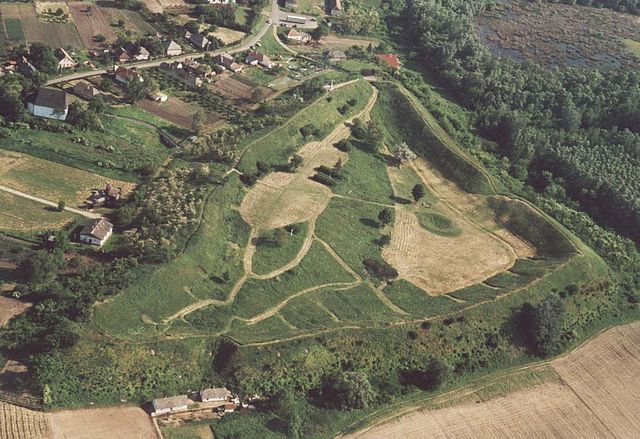The ispán or count was the leader of a castle district in the Kingdom of Hungary from the early 11th century. Most of them were also heads of the basic administrative units of the kingdom, called counties, and from the 13th century the latter function became dominant. The ispáns were appointed and dismissed by either the monarchs or a high-ranking royal official responsible for the administration of a larger territorial unit within the kingdom. They fulfilled administrative, judicial and military functions in one or more counties.
Remains of the fortress at Szabolcs
Kingdom of Hungary in medieval Europe (c. 1000)
Castle of Esztergom
Trencsén Castle (Trenčín, Slovakia), seat of Matthew Csák
The Palatine of Hungary was the highest-ranking office in the Kingdom of Hungary from the beginning of the 11th century to 1848. Initially, Palatines were representatives of the monarchs, later the vice-regent (viceroy). In the early centuries of the kingdom, they were appointed by the king, and later were elected by the Diet of the Kingdom of Hungary. A Palatine's jurisdiction included only Hungary proper, in the Kingdom of Croatia until 1918 the ban held similar function as the highest office in the Kingdom, monarch's representative, commander of the royal army and viceroy.
Palatine of Hungary
Aba, the first known Palatine, later King of Hungary (r. 1041–1044)






